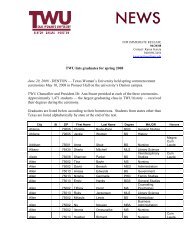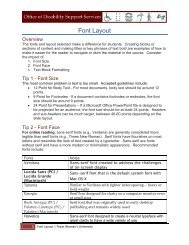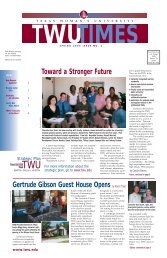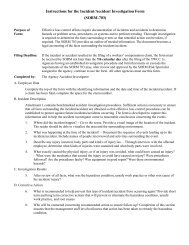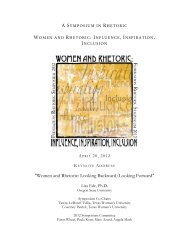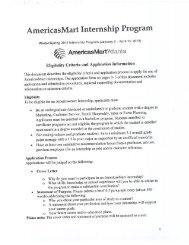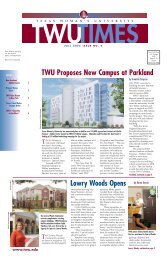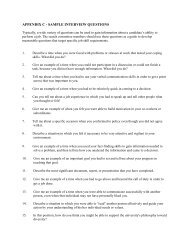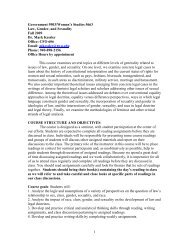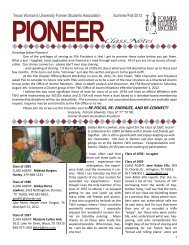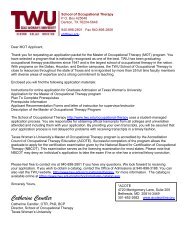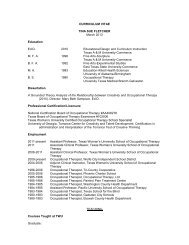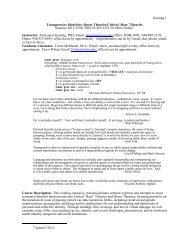HUMPHRIES' ASSESSMENT OF AQUATIC READINESS (HAAR) A ...
HUMPHRIES' ASSESSMENT OF AQUATIC READINESS (HAAR) A ...
HUMPHRIES' ASSESSMENT OF AQUATIC READINESS (HAAR) A ...
Create successful ePaper yourself
Turn your PDF publications into a flip-book with our unique Google optimized e-Paper software.
placement procedures; education in the least restrictive environment; [and] procedural<br />
due process of the law” (IDEA, 2004).<br />
Assessments in the Adapted Aquatics Setting<br />
Purpose and Importance<br />
In order to ensure that a student is able to participate in an aquatics program<br />
his/her present level of functional performance must be determined. The student’s present<br />
level of functional performance provides the instructor with information on that student’s<br />
strengths and weaknesses.<br />
A very effective assessment method is the use of a screening or testing instrument<br />
(Silliman-French et al., 2005). Along with providing information on the student’s present<br />
level of functional performance, an assessment instrument provides a guide for the<br />
development and determination of the type of service and instruction the student requires.<br />
Its also provides a method for the measurement of the student’s achievement thought out<br />
the instructional program (Silliman-French, et al., 2005).<br />
Current Adapted Aquatics Assessments<br />
There are many assessments that are used in adapted aquatics. These assessments<br />
are based on a variety of different teaching methods. These methods range from assessing<br />
the student’s water orientation to the student’s swimming skills.<br />
The learn-to-swim progression model is the most common teaching method used<br />
(Gelinas & Reid, 2000). This method follows a sequential format and is developmental in<br />
nature thus forcing the student to complete the components in a sequential manner. The<br />
challenges that are associated with this method are that the validity of the assessment can<br />
be compromised. In order for an assessment to be considered a valid developmental<br />
6



